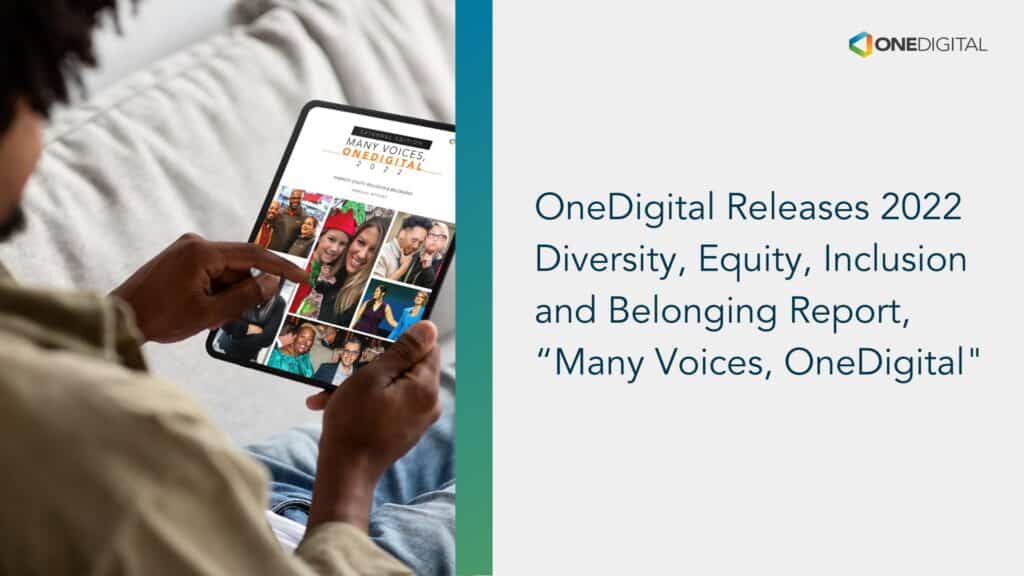Better Benefits, No Headaches
Establishing a Culture of Diversity and Inclusion Year-Round
Establishing a Culture of Diversity and Inclusion Year-Round
As demonstrations continue across the country in reaction to decades of racial injustice, business leaders everywhere must take a hard look at their practices, workforce and culture. For the past few months, the lines between work and home have been blurred as remote work becomes our norm and the recent strain of these events has impacted the mental health of employees.
One thing is clear; conducting ‘business as usual’ is not recommended. How an organization views and responds to events like these can shape its identity and silence will not go unnoticed. How businesses react and/or fail to act can leave employees and customers alike feeling a range of emotions, from inspired to deflated and potentially frustrated with the company.
Diversity and inclusion (D&I) initiatives remain applicable and timely today. They should be an integral part of an organization’s culture year-round and help connect employees to a purpose. Doing “more” is not easy, nor is it a strategy. Implementing a D&I plan requires investing resources, time and thoughtful planning to gain traction. With the right intention and commitment, organizational change is possible.
Here are a few helpful tips to help you cultivate results in your workplace.
-
Determine Willingness
Step one is for each individual and leader to determine what they are willing to do, what action they will commit to, to develop a culture of diversity and inclusion.
Start simple: does your team match the makeup of the community that it serves? If not, what are you willing to change?"
Senior leaders need to be clear and intentional about the culture they will model and about their focus and investment in diversity and inclusion. Be clear, communicate well and then “walk the talk.’
Develop a business case for diversity, detailing the why and how it will take shape, then link these actions to revenue growth and profitability. Analytics has allowed organizations and HR leaders to identify gaps in their diversity strategies and apply those insights to create more diverse and inclusive workplaces. Additionally, a recent study of 1,700 businesses found that diverse companies produce 19% more revenue. This shows that diversity is not just a metric to be strived for, but it is an integral part of a successful revenue-generating business.
-
Begin Conversations…and Listen
Starting a conversation about race and inequality may be difficult and uncomfortable. We often hear, “I don’t know what to say, so I’d rather stay quiet for fear of saying the wrong thing,” but here is where leaders need to choose courage over comfort. You can start by saying: “I don’t know what this feels like to you, but I want to be here for you in a way that works for you.” Do not assume you know the part, the stage or the script, but show up all the same.
Leaders must be courageous; begin by engaging in a dialog with your team, peers and colleagues. These discussions can be facilitated, organized or organic. Consider the topic of empathy to start. Empathy professor and researcher Brené Brown defines empathy as a way to connect to the emotion another person is experiencing. When setting the stage for discussions with employees, employers can reference Theresa Wiseman’s four defining attributes of empathy. They are defined as being able to see the world as others see it, being nonjudgmental, understanding another person’s feelings and being able to communicate and be understanding of other individual’s feelings. In addition, employers can consider facilitated conversations such as the Emotional Emancipation Circle or E.E.C. created by a partnership of the Association of Black Psychologists and the Community Healing Network, or a simulation process, which can be an interactive tool that helps people understand the connections among racial equity, hunger, poverty, and wealth. An example of a simulation process can be found here.
Consider D&I training and coaching. Provide training opportunities in areas of communication, emotional intelligence and diversity & inclusion.
When we start losing our tolerance for vulnerability, uncertainty, for risk — we move away from the things we need and crave the most like joy and love and belonging, trust, empathy, creativity.”Brené Brown
-
Establish Employee Resources Groups (ERGs)
Regardless of your field of work or the size of your organization, chances are there are several affinity groups—or groups of people linked by a common interest—seeking to feel a sense of belonging. ERGs can provide a solution by creating a safe space where affinity groups can build relationships and share resources. Because the scope of diversity cuts across so many dimensions, ERGs have a small margin for limitations. Common groups include generational (e.g., millennials, baby boomers, etc.), LGBTQIA+ employees, women in the workplace and ethnicity-based groups (e.g., African American, Hispanic, Arab, etc.).
-
Conduct a Company-Wide Confidential Employee Engagement Survey
A confidential survey is another action on the journey of discovery and a path for leaders to become aware of the authentic sentiments of their workforce. Surveys create a safe space for employees to share their honest thoughts and opinions comfortably. Once the survey results are available, assemble an action group, represent the entire organization to develop and implement initiatives to address concerns. If the organization is not ready to act, a survey might not be an option for consideration.
Leaders must determine and agree upon the actions that will be taken regarding survey results. Leadership can provide guidelines: budget, level of effort, other metrics or constraints, prior to sending out the survey. Leaders need to be clear on the actions the organization is willing to take. Before conducting the survey, leadership should review each question and determine their actions based on the responses. If you’re not willing to address the particular topic – do not ask the question.
-
Develop Recruitment Strategies to Attract Diverse Candidates
Move beyond the idea that the talent pool is limited to only those who are applying. Ask yourself, “If the diverse candidates aren’t coming to us, how can we reach them?” Find new and innovative ways to source employees. Create a communications strategy to connect with prospective candidates. Proactively discover new sources to communicate available positions where different groups may see them, go to local campuses, participate in career fairs, or target colleges and universities with larger minority populations. Consider candidates with transferrable skills such as those trained and recently departing the military. It’s about doing your research and thinking outside the box.
Beyond recruitment strategies, develop support systems once you’ve hired diverse candidates. Some companies bring diverse candidates in, yet hold them to a different standard and are surprised when they leave. How can you confirm your business isn’t one of “these companies?”
A few final thoughts, according to an article in the New York Times, by Madeline Harpert called “A Conversation on Race”
- Manage expectations
- Practice active listening
- Take a break if (when) you need one
- Set boundaries
- Keep conversations off social media
- Remember your own evolution
- Unlearn racism together
Diversity and inclusion initiatives must go further than hiring diverse groups of people. It means making sure ALL employees feel welcomed, comfortable and respected while presenting their true authentic selves."
For additional guidance, watch the on-demand webinar, “Action in Times of Crisis: Facilitated Discussion About Racial Inequalities,” where our OneDigital experts and community business leaders will explore how to have the necessary conversations to begin making progress toward racial equality in the workplace.




